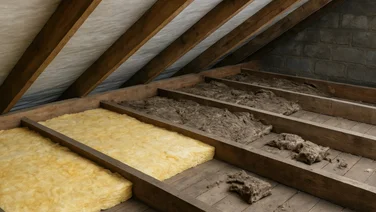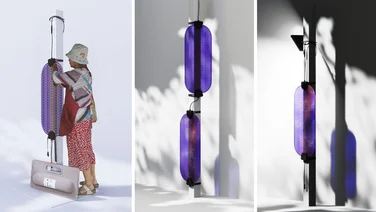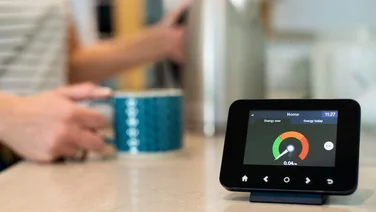- What’s on this page?
- What is rainwater collection and why do people do it?
- How to start collecting rainwater at home
- What can you use the rainwater for?
- How much does a rainwater collection kit cost?
- Pros and cons of rainwater collection
- Is your home suitable for rainwater collection?
- Is rainwater collection popular in the UK?
Want to become more environmentally friendly, but not yet ready to purchase green technology such as heat pumps? You could try collecting rainwater.
If you want to know how much a heat pump will set you back, take a look at our heat pump cost calculator.
The UK is renowned for its drizzly weather after all. In fact, some areas of the country – including Snowdonia, the Lake District, and the Scottish Highlands – receive more than four metres of rainfall in a year (the Met Office, 2021).
That’s a lot of water that could be stored and reused.
As well as having huge environmental benefits, harvesting this rainfall can save people between 40% and 50% on their water bills.
Want to make use of this wasted water? Read on to learn how to harvest rainwater at home, why it could save you money, and how much it’ll cost you to install.

What’s on this page?
What is rainwater collection and why do people do it?
Rainwater collection does exactly what it says on the tin – it’s a unit that collects rainwater and stores it for later use.
These systems come in all sorts of shapes and sizes, ranging from simple rain barrels to more elaborate structures with pumps, tanks, and purification systems.
Why go through the trouble to collect rainwater? Instead of relying on water from the mains, people reuse this rainwater for their gardening, cleaning, or even bathing – but more on that later. By doing this, you can save money on water bills, be more environmentally friendly, and conserve water resources.
How to start collecting rainwater at home
Rainwater collection – also known as rainwater harvesting – can be done from the comfort of your own home.
It’s a simple procedure. The rainwater is collected from the roof of a building, garage, greenhouse, or any other structure – as long as it has a gutter and a pipe that can channel the water to ground level.
The collected rain will then travel to a water butt (a free-standing container that can be easily hooked up to a drainage system).
If you’re using a water butt to store water for things like gardening or washing your car, you can simply use a tap at the bottom of the water butt to access the water. However, if you’re hoping to use the rainwater in your home, for things like flushing the toilet or washing clothes, there are a few extra steps that need to happen.
A whole-house rainwater harvesting system involves filtering the water in the tank to remove coarse material like leaves. Depending on how you plan on using the water, you might need finer filtering and disinfection too.
The components needed for a whole-house rainwater harvesting system include:
- A storage tank
- Pumps
- Pipes
- Filters
- Connectors
- A control system
- Mains water backup
You can check how much water you save with your water butt by comparing your water meter before and after.
Different types of rain collection tanks
If you want to start harvesting rain at home, you’ll need to consider which type of tank/water butt you’ll need. Generally, there are two options:
- Above-ground water tanks – These can be used for toilets, gardening, and anything where the water does not need to be filtered. Above-ground tanks are usually much cheaper to buy and install than below-ground systems and although they’re useful to have, you might want to bear in mind that they’re not very easy on the eyes
- Below-ground water tanks – These are the more expensive option to buy, install, and run, since they use a pump, which channels the water to the house. However, they also offer greater savings on water bills. Below-ground tanks can be installed anywhere underground, but placing them under driveways is a pretty popular choice as it can help prevent flooding issues
What can you use the rainwater for?
Depending on the type of rainwater collection system you get, it can be used in a number of different ways.
If you get an above-ground system, you’ll be able to use the rainwater for:
- Gardening – Rainwater is much better for your plants than tap water because it’s ‘soft’, which means it has a lower pH level and fewer chemicals. The minerals in mains water can raise the pH of your root zone, which can affect the amount of nutrients your plants can absorb
- Washing the car – Instead of using water from the mains to wash your car, or paying someone else to do it, you can reuse rainwater and do it for free
- Cleaning the house exterior – Similar to the point above, the collected rainwater can be used to clean your property, instead of paying someone else to do it or using the mains water
However, if you’re using a below-ground rainwater collection unit, you could use it for some additional things, including:
- Flushing the toilet – We waste a lot of water flushing toilets, but you could use your rainwater collection to cut back on this water usage. Just make sure the system has good filtration, which will remove debris and particles that might block any valves
- Washing clothes – Rainwater is a soft water, which means you’ll need less detergent and it’ll prevent the build-up of limescale in the washing machine. Again, just make sure the rainwater is being filtered before doing this
- Bathing – This one is a bit controversial, and might not be for everyone. On the one hand, rainwater is soft water, which is good for your skin. It also contains certain microorganisms that produce vitamin B12 as a metabolic byproduct. On the other hand, it can contain bacteria from animal droppings that haven’t been filtered out as well as it is in mains water
Although you can technically use rainwater for anything around the house, we don’t advise drinking it, as it could make you ill. The Centers for Disease Control and Prevention states that: “Rainwater can carry bacteria, parasites, viruses, and chemicals that could make you sick, and it has been linked to disease outbreaks”.
How much does a rainwater collection kit cost?
The cost of a rainwater collection kit will depend entirely on the type and size of the system you go for.
A 200-litre above-ground water butt can range from £70-80, whilst a 1,000-litre system can go up to £350. However, more advanced kinds of water butts have a pump installed, which can increase to cost substantially – often up to around £750.
As for a fully functioning domestic system? You’ll be looking at spending around £2,000–£3,000. This higher price mainly comes down to the fact they need a pump feed system, rather than a gravity feed one.
You’ll also need to consider the cost of installation. If you’re just using a basic water butt for gardening, you can do this yourself for free. All you need to do is insert a runoff pipe from one of the gutters, and direct it into the opening of the water butt.
However, installing a more complex rainwater harvesting system can cost anything between a few hundred pounds to a couple of grand.

Pros and cons of rainwater collection
| Pros | Cons |
|---|---|
| Cheaper water bills | Aren’t suitable everywhere |
| More sustainable | Advanced systems can be pricey |
| Can help the environment | Contamination risks |
Advantages of rainwater harvesting
- Reduces water bills – By using rainwater for everyday house chores, you can reduce the amount of money you pay to water companies. In fact, a property with a rainwater harvesting system can save between 40% and 50% on their water bills
- More sustainable – There is only a finite amount of fresh water on the planet, and as the climate heats up, water resources will continue to decrease. Using these water-saving techniques can divert less water away from rivers, bays, and estuaries, which will help the environment in the long-term
- Can help the environment – Collecting rainwater can decrease ‘stormwater runoff’, which is a fancy way of saying it will help prevent flooding in urban areas with bad drainage systems. You’ll also be reducing global emissions by relying less on water companies, which use a lot of energy on infrastructure projects
Disadvantages of rainwater harvesting
- Isn’t suitable everywhere – Hot, dry climates might not have enough rainwater to collect. It can also be more challenging to install rainwater collection units in more built-up areas
- Advanced systems can be pricey – Although advanced rainwater collection systems can save you a lot on bills. If you want to reuse rain to flush your toilet, wash your clothes, or bathe, you’ll need to fork out a few thousand pounds before you can start saving money
- Contamination risks – Some filtration systems work very effectively, but there is a risk that runoff water on some roofs could contain lead, animal faeces, and other chemicals
Is your home suitable for rainwater collection?
Good news – most homes are suitable for rainwater collection.
Homeowners in properties with a slanted roof and proper guttering will find it easier to collect rainwater, but people in other types of houses will also be able to get involved.
People living in flats or a block of apartments can use an underground tank to collect water, but bear in mind that this will depend on how big the building is, and could end up costing a lot.
Thinking of getting a rainwater harvesting system to your property? You’ll need to consider a few important factors first:
- How much rainfall do you get in your area?
- Is there enough space for a tank in the garden?
- If not, are you able to get an underground tank?
- Will the cost of installing a new piping system be too pricey?
- Will my property be suitable to collect the amount of water I need?
Is rainwater collection popular in the UK?
You won’t find a water butt in every garden in the UK, but it’s certainly becoming more popular.
As it stands, there are only about 400 rainwater collection systems installed in the UK every year. But as companies continue to increase the price of water, it’s likely that more people will start looking to rainwater collection as a way to reduce bills.
Summary
Rainwater collection systems are a great way to save money and be more sustainable at home.
Although they’re not common to see in all UK homes, they’re sure to get more commonplace as climate change continues to threaten the world’s water sources.
Looking for more ways you can cut back on water at home? Check out our helpful guide on the Top 11 Ways To Save Water At Home.






